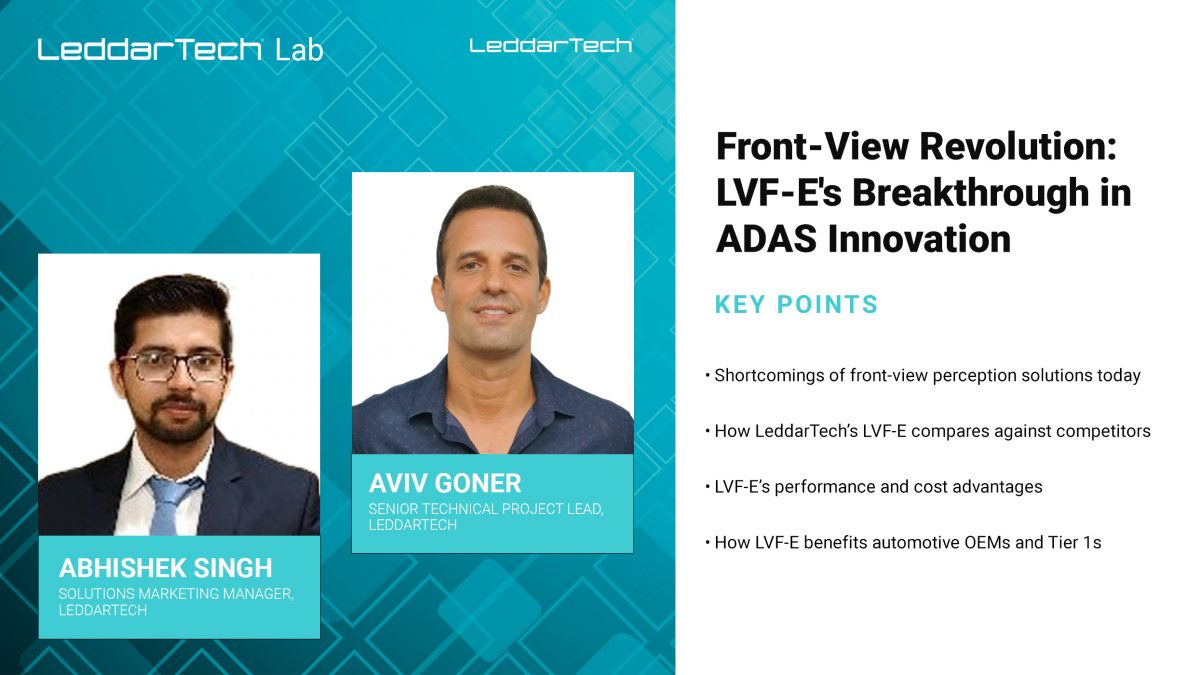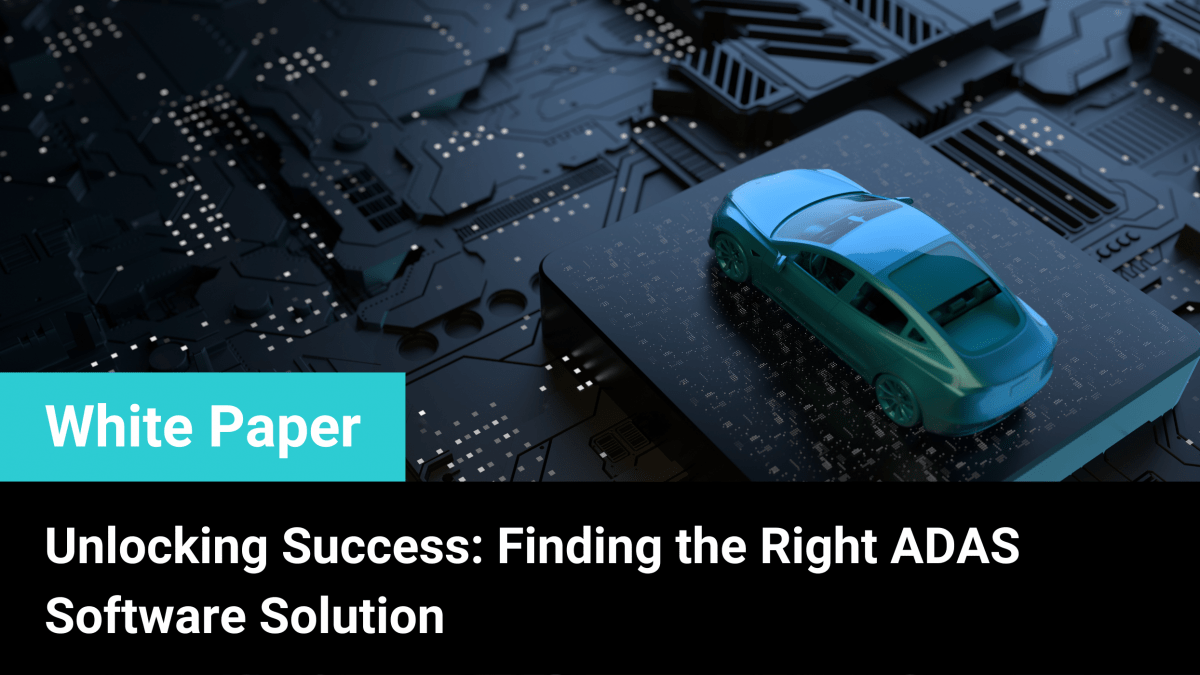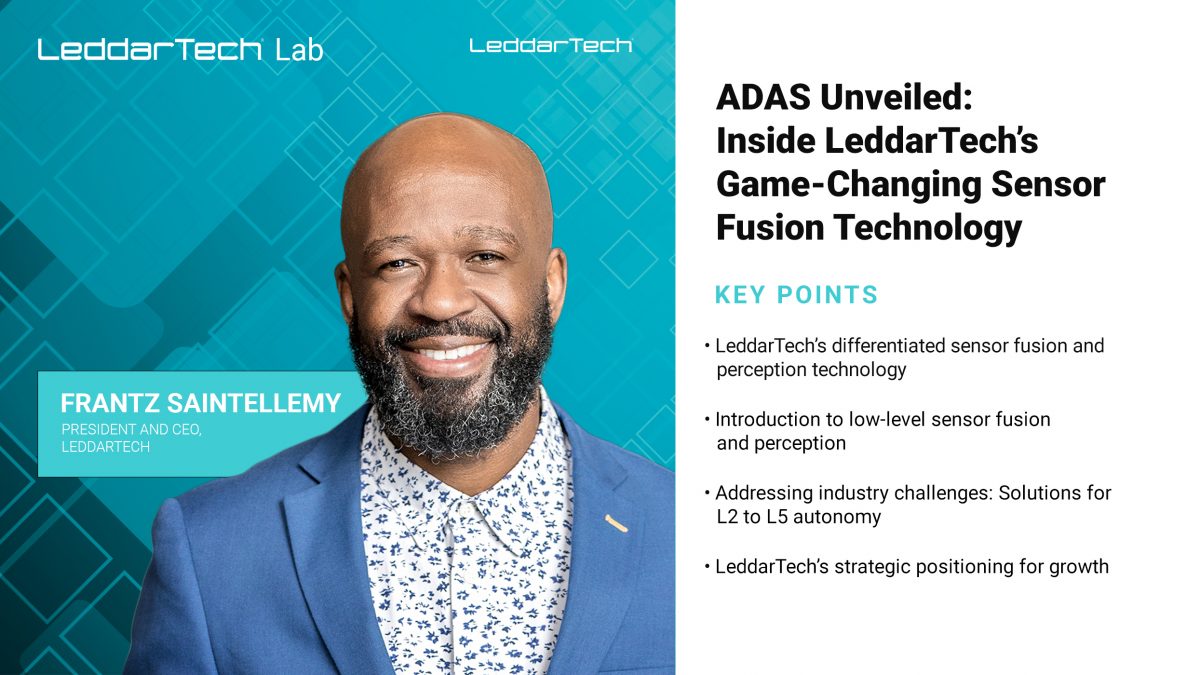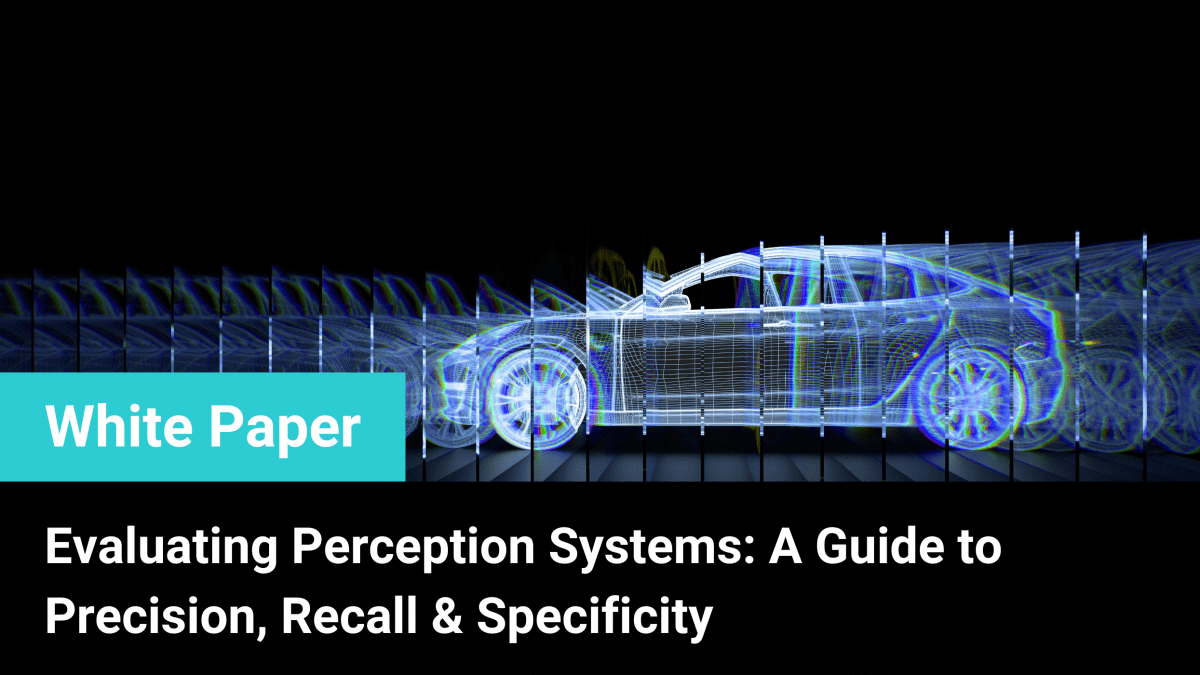A CTO’s Challenge: The Significance of Regional Perspectives in Developing ADAS Technology
In this episode of the LeddarTech Lab podcast, host Michelle Dawn Moody engages with Pierre Olivier, CTO of LeddarTech, in a comprehensive discussion about the challenges and trends in developing ADAS and AD technologies from a regional and global perspective. Pierre delves into the growing consumer acceptance of safety features in ADAS and AD, the confusion between the two and the impact of regional variations on technology development. He emphasizes the significance of a global presence for understanding diverse regulatory and environmental conditions. Pierre also highlights key trends in the automotive industry, such as CASE, AI advancements and the move towards software-defined vehicles. He concludes by discussing LeddarTech’s role in promoting ADAS adoption through innovative technology and cost-effective solutions.
About Pierre
Pierre is recognized for his technical expertise as well as his vision. He has decades of experience in the development of high-tech products and is a well-known industry speaker at ADAS and AD technology events and conferences throughout North America and Europe.
Pierre has designed a high number of innovative, adaptable, practical and robust products used worldwide in strategic applications such as emergency dispatch and air traffic control. Before joining LeddarTech in 2010, he worked at DAP Technologies, Adept Technology Canada and CML Technologies. Pierre holds several patents.
As CTO, Pierre is also responsible for LeddarTech’s Global Operations and Mobility Solutions. Pierre holds a degree in electrical engineering from Université Laval and is a member of the Ordre des ingénieurs du Québec.
Podcast Transcript
Hello and welcome to the LeddarTech Lab podcast brought to you, of course, by LeddarTech. I’m your host, Michelle Dawn Moody, and today we’re talking about a CTO’s challenge when it comes to regional observations from a consumer standpoint with the development of ADAS. And I have a wonderful guest, the CTO of LeddarTech, Pierre Olivier. Thank you so much for joining me, Pierre.
Pierre: Thanks, Michelle.
Michelle: It’s good to see you in person because a lot of times we don’t get to connect. It’s always on Zoom. A lot of people are working remote. So, nice to have a face-to-face conversation. We talked to some of your colleagues from East Asia, North America and Europe about consumer behavior when it comes to ADAS and AD based on regions. So with that in mind, what type of global trends are you seeing concerning what consumers are looking for when it comes to ADAS and AD, and just kind of their opinions in general?
Pierre: That’s a great question. And certainly, what we’re seeing is, first of all, the safety features. Now, there’s a very high level of acceptance. If you go back a couple of years ago, people were frightened of these features. The features didn’t necessarily behave well in every condition, still not very mature. So, the knee jerk reaction was many people turned them off. Whereas nowadays, I think people have started getting used to these features and increasingly they demand the features and they’re part of their list of buying criteria. So that, I think, is definitely a high level of acceptance. When it comes to the convenience features, there’s still confusion in many buyers’ minds between the ADAS and AD. So many people are still on the edge about how these features will perform, whether they want to use them. And lots of confusion also comes from what they see in the media, where of course they see the accidents and so on. So, of course, that’s where they associate AD with ADAS and say, “OK, no, I’m not sure about these features.” But I think more and more people are starting to understand the true benefit. Because ultimately, these features are meant to give time back to people. So, I think they’re starting to see, and I think in the next few years we’re going to see much higher growing levels of acceptance.
Michelle: Yeah. And we know how valuable time is, our greatest, not in monetary value, but I mean, really the greatest asset that we have. So, with that in mind, when we’re talking about the regional differences, how hard does it make your job as a CTO? Because there are so many variants depending on what region consumers are in.
Pierre: That’s a great question. The need itself is universal, because the way like high-level driving is consistent in all regions. What differs is two things. First of all, the environment. Of course, driving in, for example, in North America versus driving in China or in India, it’s a completely different context. Also, there’s the environmental conditions that change. For example, if you drive in the northern countries, snow countries, very different from southern U.S. There’s also significant difference, for example, in the way like the traffic signs, the road markings and so on. So, the challenge is building solutions that can address all these different variants. That’s very important, because increasingly also the manufacturers are global. The auto platforms are global. So, there really needs to be that global mindset brought in from the beginning of the design, if you want to be able to then address the rollout in the different regions. Of course, the phasing at which the consumers in the different regions is different. For example, you look in China, people are maybe a bit ahead of U.S. or Canada regarding acceptance of the autonomous features. So, there’s a bit of that regional difference. But in the end, everybody will get the same level. There’s not decades of difference. You’re talking maybe years, few years of difference in where their level of acceptance is.
Michelle: So, to bring up something you mentioned, regarding the global impact, because we talked about differences with regionalization of how people are having opinions of ADAS and AD. So, how important is it to look at that global spectrum of things when you’re trying to push things out? But, as you said, there are those nuances between the areas. So, how do you deal with that? And then, how does being aware of knowing that there may be some differences really benefit the consumer?
Pierre: Great question. Well, to me, it’s twofold. First of all, you need to be out there. You need to be in the region. Companies need to be global in order to be able to capture both the, let’s say, physical or technical nuances, but also the regulatory aspects. So, as we move towards higher levels of autonomy, the regulatory frameworks in the different regions and countries will evolve as well. So, first-hand knowledge of regions is critical, but also our customers, the manufacturers, they need local support to be able to integrate the solutions. Therefore, a global presence is really essential for a company like us in order to be able to address the market effectively.
Michelle: So, you are asked, and rightfully so, to speak on a lot of panels and make presentations because clearly you’re very knowledgeable about the subject at hand. So, what type of trends are you seeing right now in the automotive industry?
Pierre: Well, first of all, I think there are very high-level trends. Of course, the whole CASE (Connected, Autonomous, Shared, Electrified) trend is driving the entire industry. But beyond that, there are several technical trends. For example, you look at the E/E architectures moving towards centralized or zonal architectures. So, that’s a complete mindset change that enables what’s termed the software-defined vehicle. That’s a very important one. There’s very rapid progress on the AI side, and of course, AI is a critical component of self-driving solutions. Finally, I think we’re starting to see that hardware capability is catching up. The improvements in system-on-chip performance, improvements in sensor performance, and so on, mean that the baseline technology there is present today to deliver these higher levels of autonomy. So, the biggest challenge now remains how you move or how you develop the software. And that’s where we’re starting also to see a shift because with the move in EE architectures, it also enables different ways of developing software, such as the agile methods. That’s where the car makers are today; they’re in the midst of making that shift.
Michelle: So, what is LeddarTech doing to really help with the adoption of ADAS, especially when it comes to OEMs and Tier 1s? Because, as you said, it’s kind of trickling into more and more of the groups. But when we discuss making it available to the masses, how does LeddarTech contribute to that?
Pierre: Well, two things. First of all is, I think in the last couple of years, there’s been growing appreciation that AD is a complex enough problem that nobody can solve on their own. And certainly this is where, if you go back a couple of years ago, many of our customers today were like, OK, now we don’t need you. We can do everything ourselves. Now they realize that’s not the case. I mean, the industry has been at this problem for more than 20 years. So, it’s not just a matter of throwing resources at it and money at it. It is a very complex and very multidisciplinary problem. In this area, our contribution, what LeddarTech do, is we’ve developed and invented a very unique low-level fusion method that enables, I was mentioning the hardware platforms earlier, it enables leveraging the output from every sensor modality to the fullest extent. In the industry, what enables, first of all, the performance, because if you don’t use every sensor, then you’re having difficulty delivering in the difficult conditions. I was mentioning, for example, snow earlier. Driving in snow conditions is very different than driving on pavement, because you don’t have necessarily the benefit from the lane markings. The solutions need to be able to work in these types of conditions. It can be heavy rain, it can be difficult lighting, and that’s where our fusion technology comes in and really enables extracting this imperfect but present data from the different sensors. The other part of that is, by doing that, you’re able to reduce the number of sensors. For example, we’ve demonstrated solutions where instead of having 11 cameras, we can do the same thing with five cameras and achieve equivalent or better performance. This means it’s a very, very significant cost-benefit to our customers, the auto manufacturers, because not only do they have less cameras per vehicle, but also all the associated content, like the wiring and the computing and so on, goes hand-in-hand with that. Reducing the number of sensors is key to hitting the cost points and the price points that the industry is expecting. That’s going to be contributing to the acceleration of deployment of these technologies.
Michelle: It’s funny, because you talk about snow and fuzzy, I’ve never thought of that. I think of warm and fuzzy; I never think of driving in snow as being fuzzy, but it makes sense when you’re trying to see what’s going on. Let’s close with this, because you’ve provided a lot of great information here, Pierre. What are three takeaways that you can give us regarding the automotive industry, perhaps any trends and the excitement around ADAS and AD, and just how beneficial it can be?
Pierre: From my standpoint, firstly, as I was mentioning earlier, consumer acceptance is key. These are features that customers want, and very soon we’ll see that they will drive customers’ purchasing decisions, similar to what happened with infotainment. Just as customers demanded Apple CarPlay and Android Auto, we’ll see the same with higher levels of automation. Safety is a bit different because people don’t experience it firsthand; they want it, but it’s not something they have a strong attachment to. However, autonomous driving will transform their lives. Secondly, of course, the trends in AI will enable these technologies to mature and to become much more high-performing. And thirdly, I would say, the shift to the software-defined vehicle, because it will enable capabilities similar to those seen in enterprise computing, such as multi-vendor, multi-platform support, leveraging state-of-the-art software development technologies, and ultimately delivering on the promises of autonomous driving.
Michelle: It’s exciting to hear about the future. Of course, I feel like we almost live in a sci-fi movie now, but it’s amazing to think about how quickly that technology is rapidly evolving and some great points, especially when it comes to the global market, of how things are being rolled out. So, thank you so much, CTO Pierre Olivier with LeddarTech. Thank you for being here. I know this is an exciting time for you to see everything going on, so I appreciate you filling us in on all of the good stuff happening. Thanks for being here.
Pierre: Thanks, Michelle. My pleasure.
Thanks for tuning in and listening to the LeddarTech Lab podcast. Of course, you can visit the LeddarTech website for more information there. Be sure to subscribe to the LeddarTech Lab podcast so you can hear more engaging conversations like the one you heard today. I’m your host, Michelle Dawn Moody. Thanks again for joining us. We hope to connect with you on another podcast soon.






